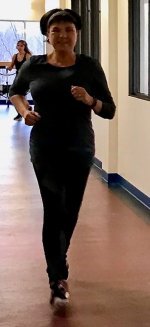Natural Health Solutions
- The Well (Home Page)
- Water Cures Blog
- How To Do Water Cures
- What is Water Cures?
- Electrolytes & Salt
- Drinking Water
- Hire a Hydration Coach
- Acid Reflux
- Addiction Treatment
- Allergy Relief
- Blood
- Bones and Joints
- BP / Heart / Vascular
- Brain / Head / Mental
- Cancer
- Chronic Fatigue
- Cramps No More
- Dehydration
- Edema
- Fibromyalgia
- HIV / AIDS
- Immune System
- Lungs / Respiratory / Cough
- Lupus
- Lyme Disease
- Multiple Sclerosis
- Pain
- Skin Care
- Urinary Tract Infection
- Womens Health
- Water & Weight Loss
- Student Grades
- Survivalist Health Care
- Pet Water Cures
- Hydration Coach
- Testimonials
- My Water Cures
- FAQ
- In The News
- Volunteer
- About / Contact
- Red Light Therapy
- Live Blood Microscopy
Brain Stem Stroke Recovery
Chances of brain stem stroke recovery were considered to be poor. We have come a long way. We may be able to improve the outcomes.
More importantly, we remember that, just as in the early 1990's when successfully treating a stroke victim in a time when it was thought a waste of time, we know today better outcomes are possible.
Before telling you my story of treating a woman who recovered from a massive stroke that left her in a vegetative state, consider what science has proved. Consider the possibilities.
There are several reasons for thinking the outcomes can be improved.
Improving Outcomes for Brain Stem Stroke Recovery
1) Brain nerve pathways can regenerate
2) Brain cells can repair and possibly grow anew (called neurogenesis)
3) We can promote the above processes with hydration, electrolytes and diet
4) We can provide mental stimulation to promote the above processes
5) Providing precursors that help in the production of Glutathione helps with all of the above
Historically, the thinking of 'no hope' was still alive in the mid 1970's.
By the mid 1990's recovery of consciousness after a non-traumatic brain injury (stroke) was still considered unlikely. Of the 169 patients in a persistent vegetative state in one survey from 1994, 11% regained consciousness in three months, 2 more within 6 months and one final recovery within the year. That was a total of 15% or 25 who recovered to various degrees according to the New England Journal of Medicine titled Medical Aspects of the Persistent Vegetative State
In nursing school, in the early 1990's, we were still taught that once someone enters a vegetative state, there is little hope. The sensational recoveries, we were told, were urban legends, mere myths. Yet at the same time, the topic was hotly debated as an ethical consideration.
By the mid 1990's the research started showing positive results of those who came out of a vegetative state. This was shining lights on the possibility of hope for brain stem stroke recovery. I know this because of personally treating one such patient. She was admitted to my floor with a massive stoke and was in a vegetative state.
What Is a Prolonged Vegetative State?
A vegetative state is a condition lasting a minimum of three months. It is different than a coma which lacks both awareness and being awake. People in a vegetative state may have been in a coma and have awoken.
The difference, they have not regained awareness. Their eyelids may open occasionally and they may have a sleep-wake cycle. However, they lack cognitive function of consciousness. The chances of regaining consciousness diminish with every passing day in the vegetative state.
History Prolonged Vegetative State
The persistent vegetative state (PVS) syndrome was first described in 1940 by Ernst Kretschmer who at the time called it apallic syndrome. Then in 1972 it was called persistent vegetative state by the Scottish spinal surgeon Bryan Jennett and American neurologist Fred Plum.
Initially it was based on modern medicines increased capacities to keep patients' bodies alive.
This state became a legal grey area which led advocates on both sides of the issue. On one side, that these patients should be allowed to die. On the other side, if recovery is at all possible, care should continue. Because some diagnosed as PVS and have improved makes the case for those saying recovery is not possible.
Rather than arguing autonomy, their quality of life, use of resources, the wishes of person and those of the family, we are asking another question.
What if we could save more people.
What if we could save just one more person, your loved one.
Watching Someone Come Out of A PVS: My Experience
In the early 1990's, as a new LPN in a hospital, my first assignment was two people. There is not a lot to do with just two people so there was plenty of time.
One patient, Edith (not her real name) was admitted over the weekend with a massive stroke. This is her story.
My First Patient of My First Day of My First Week
When you are a new nurse, you only get two patients assigned to you. One of my two patients was an elderly woman who had a massive stroke. While she was able to breath on her own, she had no awareness. There was no response to words or even pain. Most of us will move when we feel pain. She had no reaction.
My thinking, having just seen Robin Williams in Awakening, was different than everyone on the floor was saying. One by one, my RN colleagues and trainers were saying that I was wasting my time. I reminded them that I had nothing but time since my assignment was only 2 patients.
While in nursing school we were taught that people in persistent vegetative states virtually never recovered. But we were also taught that we cannot know what goes on inside the mind of a patient when they are in a vegetative state.
With this info, I proceeded to try to connect with Edith, because of wanting an answer to that question, "What if...?"
The wasted time everyone spoke about, it was spent talking to Edith. It was providing range of motion, moving all of her limbs while explaining what I was doing.
Every day on entering the room, greeting her, I said "Hi, my name is Jonathan, I'm your nurse." I went on further to say things like."If you can hear me, move your hand or finger" or I might have asked her to blink. Speaking to her as if she could hear and process every word, my goal was to let her know that we were going to help her get out.
What if she was trapped trying to get out? What if she could hear everything but could not respond. What if she was in there but trapped? How long would she be able to last before she gave up? How long would any of us be able to last before we gave up.
Whether my actions personally helped her or not, we may never know.
What we do know, on Wednesday of that week, she moved her right great toe. It moved in directions that I didn't know you could move it. Mind you, the entire rest of her body was still, un-moving and with no signs of awareness.
On Day 4, Thursday, on entering the room and announcing my arrival, her foot, out from under the cover, started dancing. Here entire body, except for her foot, was still not moving and was unresponsive. If you did not see the foot dancing, you would have thought she was totally unresponsive.
The doctors canceled her transfer to a nursing home. Further observation was ordered.
On Day 5, Friday, calling out on entering the door, both feet were dancing on hearing my voice.
This connection we made, the neuro connections that were made, were most likely due to the intense communication over the past few days. This is just one piece to the puzzle on of helping people who have suffered strokes.
The question, what effect does our communication and working with them foster the reconnection and regrowth or the rewiring of the brain? Could more be saved if we provided intensive communication? Edith, incidentally, had a 93% recovery of her functions.
Currently up to 15 percent of stroke patients recover in the first year. While that may not seem clinically significant, if it was one of your family members, percentages do not matter.
The key to success is providing the help as soon as possible.
Then if we improve the outcomes of strokes in general, then what kind of outcomes would we see with brain stem strokes.
This is a peer reviewed article on the rehabilitation of patients recovering from brainstem strokes: case studies and clinical considerations.
The AbstractIt was estimated that 15% of all stroke rehabilitation patients had a brainstem stroke. Unlike hemispheric stroke, the characteristic consequences of brainstem stroke include ataxia, dysarthria, and diplopia, severe dysphagia and may require enteral feedings.
There is little research published on rehabilitating those with brainstem strokes even though there are a significant number who experience these.
There is a considerable amount of comprehensive research on hemispheric stroke in literature.
Promoting Neurogenesis
In nursing school we were likewise told that we were given a certain number of brain cells and that was all we got in our lifetime. Now the idea that humans do not grow new brain cells has been proven to be wrong. We can grow new brain cells in a process called neurogenesis. This ability lasts our entire lifetime. Perhaps you may be wondering what you can do to increase your own neurogenesis? While that is a topic for another webpage, this is one of the ways we may be able to help those who have had a stroke. It may offer hope and help regarding brain stem stroke recovery.
We now know that boosting glutathione (GSH) can promote neuro-repair and neurogenesis. What would happen if we increased the glutathione in someone suffering from a stroke? Further, could this help improve brain stem stroke recovery outcomes?
Could it help? While there is little science to prove this could help, the next question, would it hurt? The answer is no.
To help promote neurogenesis, the fluid and electrolyte balance needs to be maintained. Interestingly, hydrating the body with unprocessed salt also has been found to increase GSH. GSH in turn has been found to increase neuron regeneration.
Diagnose and Adios: Beyond Brain Stem Stroke Recovery
The term 'diagnose and adios' is used in medical schools regarding neurodegenerative diseases.
It points to a bias and the lack of effective treatment options (outside of surgery) for patients who are sent to neurologists. We cannot change this. However, those who have family members who have suffered strokes can make a change.
Go, talk to your family member who has had a stroke. Talk daily. Work their limbs in accord with the nurses or therapists at the hospital. Try to get them on alternative treatments that boost the glutathione levels.
In other word, do not give up. Do not let Diagnose and Adios be the end of the matter. It may be possible to help them, just as I saw a dramatic change in Edith.
Initially the first few days are the most critical, then the first three months, then the six month mark and finally the year.
Even if there is no change in the body, we do not know what is going on inside the mind. Treat them the way you would want to be treated if you were in their bed.
How Long Change
It took Dr. Lind 35 years to get lemons used in the treatment of scurvy. Today, it is not nearly as long to get new treatments incorporated into practice.
JAMA found it only takes 17 years for about 14% of newly discovered science to make it into day to day clinical practice.
As the old adage goes, the squeaky wheel gets the grease. Only those making waves in regards to brain stem stroke recovery, those who are making the squeak will hope to see a change in brain stem stroke recovery.
Recent Articles
-
Dark Screen Microscopy: What it is, does and what it can tell you.
Jul 07, 19 05:23 PM
Dark Screen Microscopy allows for a BioNutritional Auditi to look at your blood in its whole, live state -
About Water Cures and how water can help improve your health and life
Oct 25, 18 09:38 PM
About water cures: information on the Water Cures Protocol, Dr. Batmanghelidj and the founder of this site, Bob Butts.. -
Water Cures Testimonials
Apr 16, 18 09:26 PM
Water cures testimonials of those who improved their health using the water cures protocol.
October 22, 2018...
Robert Butts, founder of WaterCures.org passed away at the age of 83. He will be missed.
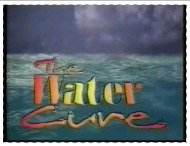
 |
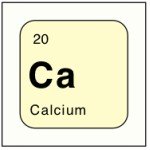 |
Warning: Research shows calcium supplements may be harmful to your health.
| Fixing Blood Disorders
Posted December 2016 |
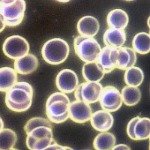 |
© 2016 Jonathan Steele
It is amazing how so many things that are new to us were common knowledge in the past. One basic practice of the Water Cures protocol is to drink at least 30-45 minutes before and 2 1/2 hours after a meal. This is not a new thought however. Notice what a magazine from 1925 had to say...
"Drink plenty of water two hours after each meal; drink none just before eating; and a small quantity if any at meal time. Do not take a bath until two hours after eating a meal, nor closer than one hour before eating. Drink a full glass of water both before and after the bath." (Golden Age, Sept. 9, 1925, pp. 784-785)
 |
New in 2016
Cancer 1, Natural Cures 0
The War...is against...
Cancer Natural Cures
---------------------
| Hand Joint Pain: How Can I Make It Go Away? |
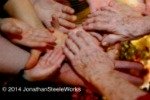 |
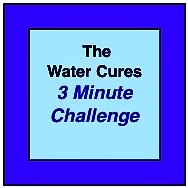 |
to try a no cost, scientifically proven way of improving your well being?
Click Here to try the 3 Minute Challenge
Find them right here!
 Shoulder Joint Pain Relief Shoulder Joint Pain Relief |
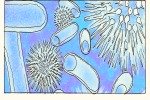 |
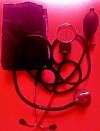 |
What Your Doctor's Not Telling You!
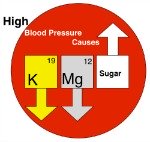 High Blood Pressure Causes High Blood Pressure Causes |
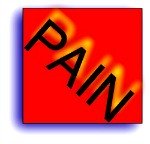 |
 |
We started expanding on the causes...
The weirdest...chimney sweep cancer. You won't believe where it strikes.
Our theory on...
Healthy Hydration for Athletics & the reason for hydration guideline failures in the past.
We speak to organizations small and large, private and corporate.
Our scientifically proven training works to improve performance and decrease lost days due to illness.
We are currently speaking to hospitals to train staff in ways to decrease the readmission rates in several disease processes that pose high risk of <30 day readmission.
We can cut the rates by up to 70%. Ask us how.
Nurse Jon for more information on hydrating to improve performance.
Here is the Science
We are not promoting increased salt intake. We are suggesting taking salt in amounts appropriate to your bodies needs, based on water needs. Our needs are not one size fits all.
Note: Do you have CHF or Kidney Disease? Then.....
THIS IS NOT FOR YOU.
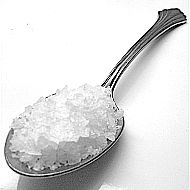 |
Read This Study
And Decide for Yourself
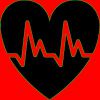 |
For Most of Us, No!
According to a JAMA study.
A Review of the above JAMA Article
Study: Salt May Not Be All Bad?
Listen to your body. Do not use this if you are under a doctors care. Do not stop taking medications without consulting your doctor. If you are on medications, consult your doctor if you start the Water Cures Protocol as it may change your needs.
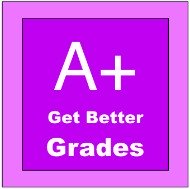 |
Click Here to Discover How
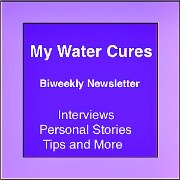 |
Click Here
Sign Up for your biweekly newsletter.
 |
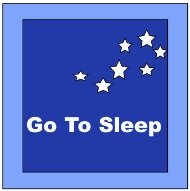 |
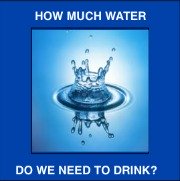 |
If you are looking for an affordable alternative natural health care for depression, consider the Water Cures protocol.
Like What You're Learning? Please share your likes on Facebook
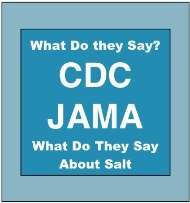 |
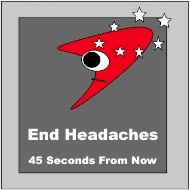 |
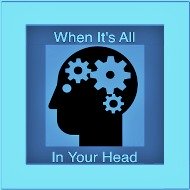 |
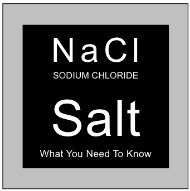 |
Hi, my name is Sharon. The webmaster of this site is my nurse, my personal water coach and my husband.
As this site was first being built, I had a headache and as usual took an Ibuprofen. Impatient for it to start working, I decided to try the Water Cures. I took a pinch of salt and a glass of water. Then I took a second pinch of salt and another glass of water. My headache was gone in less than 5 minutes.
From my personal experience, it usually takes 30 to 45 minutes for Ibuprofen to work. Some have found it takes ibuprofen 24 minutes to start working.
Yet on the Water Cures protocol, my headache was gone in 5 minutes.
Its simple: give your body what it needs and your body will give you what you need, the ability to feel great.
Water Cures was the solution for the elimination of my headache. It is what I will use from now on.
Why not give it a try yourself.
